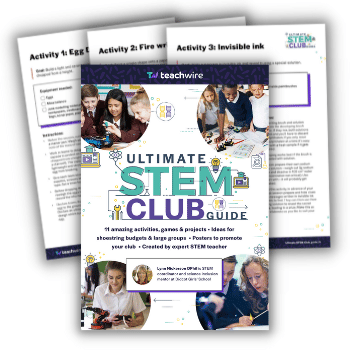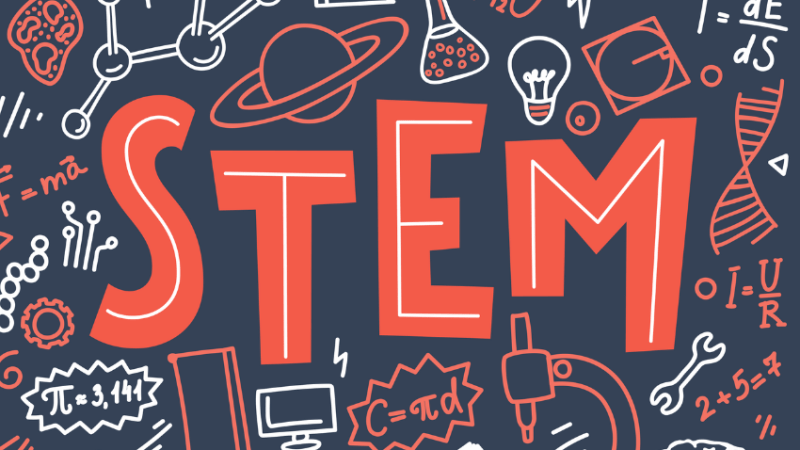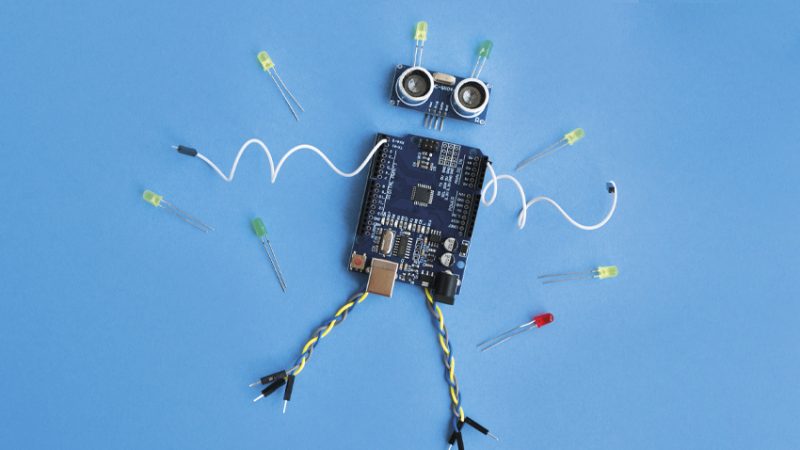Put STEM into Practice by Immersing Your School Within the Industry

When schools and industry work together, brilliant theory can be harnessed to help build a brighter future, says Gareth Thistleton

How would you feel to discover that the engineer behind the bridge you cross each day had only ever designed in VR? That scientists working on antibiotic resistance had never probed a real cell under a microscope? Or that the robotic arm created for your disabled son had been designed by an engineer who had never met a child?
Impossible to imagine? That’s because successful engineering marries scientific theory and discovery with practical application. Until an engineer can prove that their idea is relevant and workable in the real world it remains just that – an idea.
To reflect the importance of practical science we at Shell have created a national schools’ science competition, The Bright Ideas Challenge; because to plug the UK’s current shortage of engineering and science talent, we need young people to aspire not only to understand science but also to apply it in ways that have a positive, useful and lasting impact on the world.
For the challenge – now in its third year – we ask 11-14 year olds to use their science and engineering skills to come up with ‘bright ideas’ for powering the cities of 2050. And we require young people to ground their idea in the real world.
To win one of 14 prizes, totalling £45,000, it’s not enough simply to come up with an innovative concept. Students have to use their scientific skills to demonstrate the feasibility of their idea and have to work effectively in teams to ensure their solution is robust – just as any team of engineers in the workplace would.
A practical shortfall
In its latest report, Engineering UK estimates that the country has an annual shortfall of 20,000 scientists and engineers – a huge concern when it also predicts that the UK needs 1.8 million new engineers and technicians by 2025 (Engineering UK 2017).
The individuals this dynamic sector is seeking are innovative problem solvers, creative thinkers and restless do-ers – not pure theorists. As a result, to ensure we inspire the next generation of scientists and engineers, we need to create an educational environment in our schools that holds practical application in as much esteem as theoretical learning.
Yet, just last month, the Gatsby ‘Good Practical Science’ report, written by Sir John Holman, stated that the UK is ‘falling well short of achieving world-class practical science’, surmising that in spite of our country’s ‘world-class’ laboratory facilities, the intense pressure to perform in written exams is putting practical science at risk. According to the report, only 40% of UK schools have a member of their senior leader team charged with taking on an overview of practical science.
The end result? We are in real danger of creating a generation of brilliant theorists with no understanding of how to put that theory into practice in a real-world context – a huge concern for three key reasons:
- Industry needs young talent to be proficient, not only in research skills, but in practical skills – in measuring, creating, handling, testing and recording.
- We need young people with the skills and attitudes required to translate ideas into action – the kinds of team working, problem solving and communication skills and resilience that only practical experience can adequately instil.
- Most of all we need a deeper and wider talent pool than ever before. And we can only hope to attract that if we excite young people about the tangible impact they can have in the real world.
The dilemma for schools
Hearteningly, industry leaders are helping schools to respond to this need, and we are not alone in our desire to see a greater balance achieved between scientific theory and practical application.
Sir John Holman commented in the ‘Good Practical Science’ report: ‘I think that in a world where you can get so many virtual and digital experiences it becomes more important than ever to get the authentic, hands-on experience and I think schools are responding to that by recognising that hands-on practical science is even more important than it always was.’
One of the 10 key recommendations of the ‘Good Practical Science’ report was for students to have more opportunities for open-ended investigative projects. Currently only 15% of schools surveyed said their students have such opportunities. Why? Because as the report found, these projects can be ‘a significant burden on teachers and technicians.’
One organisation or initiative can’t bridge the gap alone; it should be a collective effort across the industry. As we approach 2018, HM Government’s ‘Year of Engineering’, industry leaders like us, and other supporters from the RAF to the Science Museum Group and Crossrail – all of whom would directly benefit from a wider and deeper STEM talent pool – are working to support educators as they plug current gaps in practical science.
What for educators is a burden, for industry potentially offers a huge opportunity. For these open-ended investigations, embedded in real world challenges, are exactly the kinds of projects that will help students develop the planning, problem solving, resilience and enterprise skills that will be highly prized by employers in our sector.
Industry input
That’s why The Bright Ideas Challenge comes with a raft of free, ‘ready to go’, curriculum linked resources, and puts as much emphasis on how effectively the team of students has worked together to get to its bright idea, as on the bright idea itself.
By working closely together, we want to help schools expand their practical science offering and nurture dynamic problem solvers who can truly contribute to the UK’s future prosperity.
The UK can’t afford to reach 2025 with a void of tens of thousands of scientists and engineers. More importantly still, the world, given the complex energy, food and resourcing challenges ahead cannot afford to reach 2025 without future talent fully equipped to convert scientific theory into positive real-world action.
4 steps to running an engaging open-ended STEM investigative project:
- Ideally make projects cross curricular – so even those who don’t self-identify as scientists can get enthused and involved
- Ground your challenge in the real world – young people entering The Bright Ideas Challenge have told us it’s inspiring to imagine the impact their knowledge could have beyond the classroom
- Make successful team work a prerequisite – it’s what employers will be looking for as much as great research and implementation skills. Ask teams to talk about the roles they took on and put an onus on them to demonstrate how working together helped them achieve their objectives
- Engineering ideas are endlessly challenged and scrutinised to ensure they’re robust and practical. Nurture flexibility and resilience in your students by encouraging their fellow students to probe, question and challenge their ideas and findings
Gareth Thistleton is UK head of social investment at Shell. For more information about The Bright Ideas Challenge go to shell.org.uk/bright-ideas-challenge.











